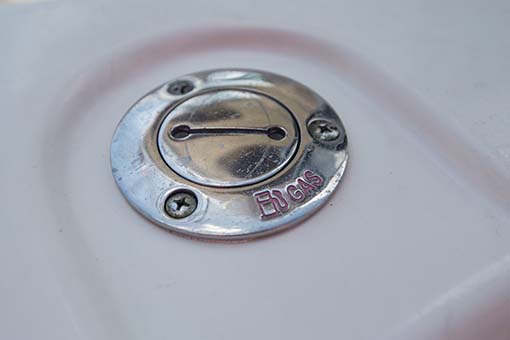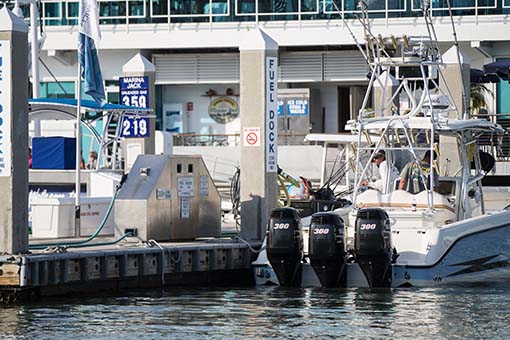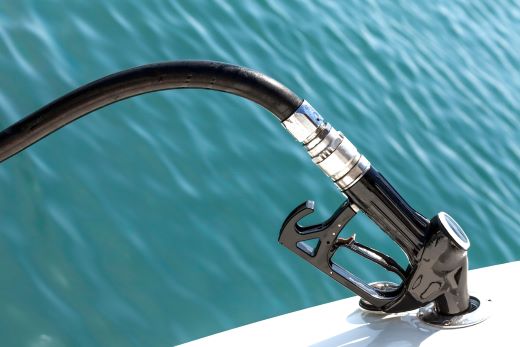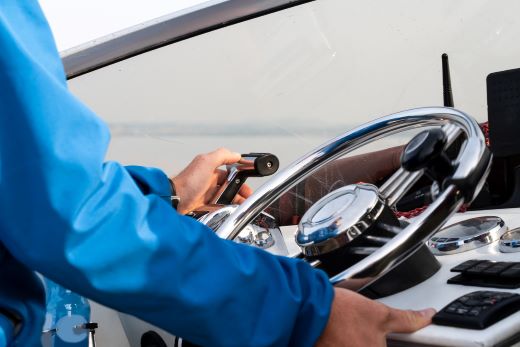Properly fueling a boat is simple in theory, but there are a few dos and don’ts to keep in mind.
It may seem a bit strange at first, but learning how to fuel a boat should be considered a part of basic boating safety.
Safe Boating Starts Here: What Is a Good Safety Precaution When Refueling Your Boat?
Wondering what is a good safety precaution when refueling your boat? This is a common question! Most people will naturally associate fueling up boats with gassing up cars, but there are several important differences. And not only does your safety depend on a proper fueling job, but the environment’s safety does, too.
Unlike cars, gasoline vapors on boats can settle due to their weight – creating a fire risk. Luckily, a quick "sniff test" around the fueling area can detect these vapors. Basically, if you smell gas, it might be a leak – hold off on starting the engine and address the leak first.
How to Refuel a Boat
While the steps might differ slightly depending on your boat's engine type (inboard vs. outboard) and layout (cabin vs no cabin), the core safety principles remain the same. Diesel fumes are less risky than gasoline, but gas-powered boats with enclosed engine compartments require special attention.
For these boats, using the bilge blower after refueling (and whenever starting the engine after a break) is crucial to remove any built-up fumes. Outboard motors, lacking enclosed compartments, don't require this step. Now let’s review the basic steps for how to refuel a boat:
1. Safety First: Preparing to Refuel
Before you even touch the pump, safety should be at the forefront of your mind. Start by securing your boat to the dock, switching off the engine, extinguishing all open flames, and turning off all electronics — including the ignition — to avoid sparks igniting those sneaky vapors.
And, of course, there’s no smoking allowed, and keep those ports, hatches, and doors closed tight while boat fueling. Plus, for an extra layer of safety, have your crew and guests disembark and enjoy the view while you complete the job.
2. Choosing the Right Fuel
Avoiding fueling fiascos starts with the right fuel. Look up the exact type your boat needs in the owner's manual, paying close attention to ethanol content if filling up on land. If the manual isn't handy, find it online or order a copy from your boat dealer. Using the wrong fuel can damage your engine, ruin your trip, and void warranties.
Plus, following the manual's fuel and oil recommendations ensures smooth operation and longevity. Remember, even new engines may have limitations – many handle E-10 (10% ethanol), but always confirm compatibility first.
3. Refueling Process
The basic boat fueling process is straightforward, but it's important to be mindful throughout:
- Double-check your dock lines to ensure your boat is firmly tied before you begin.
- Pull the fill cap out.
- Insert the nozzle into the fuel fill hole.
- Maintain fuel flow by pulling and holding the trigger mechanism. Keep a firm grip on the nozzle while filling the tank.
- Stop before it's completely full to prevent overflows and fuel entering the water. (Listen for gurgling sounds, which might indicate a full tank on some boats.)
- Keep an absorbent cloth handy. If a spill happens, wipe it up immediately and dispose of the fabric properly on land. Any fuel spill that leaves a sheen on the water must, by law, be reported to the U.S. Coast Guard via the National Response Center at 800-424-8802.
- Once finished, replace and tighten the fill cap securely.
Additionally, another common issue to prevent is putting the fuel into the wrong fill. The fuel fills are clearly marked on most modern boats, but sometimes the difference between the fuel fill and the water tank isn’t obvious. (More than one careless boater has pumped fuel onto the deck after accidentally placing the pump nozzle into a fishing rod holder.) 
4. After Boat Fueling
Once you're done refueling, try to get some fresh air circulating around the boat. Open up all the ports, hatches, and doors. And don't forget to check the bilge for any fuel leaks.
Additionally, if your boat has a blower, turn it on and let it run for at least four minutes. And remember that sniff test from the beginning? Now’s a good time to give your boat a good whiff to ensure no lingering fumes remain.
With everything ventilated and checked, fire up the engine and return to enjoying your day! Now, you can carefully bring your passengers back on board, untie the dock lines, and confidently set sail. (Knowing you've followed all the safe refueling practices.)
Learn More About Bilge Pump Basics
Everything You Need to Know About Boat Fueling
Essentially, don't let a refueling mishap ruin your trip. Always consider: what is a good safety precaution when refueling your boat? Am I following all the proper steps?
Our team appreciates your commitment to careful boat fueling. And now that you know the best practices for how to refuel a boat – the fun part can begin!
This article is sponsored by Progressive Insurance®


